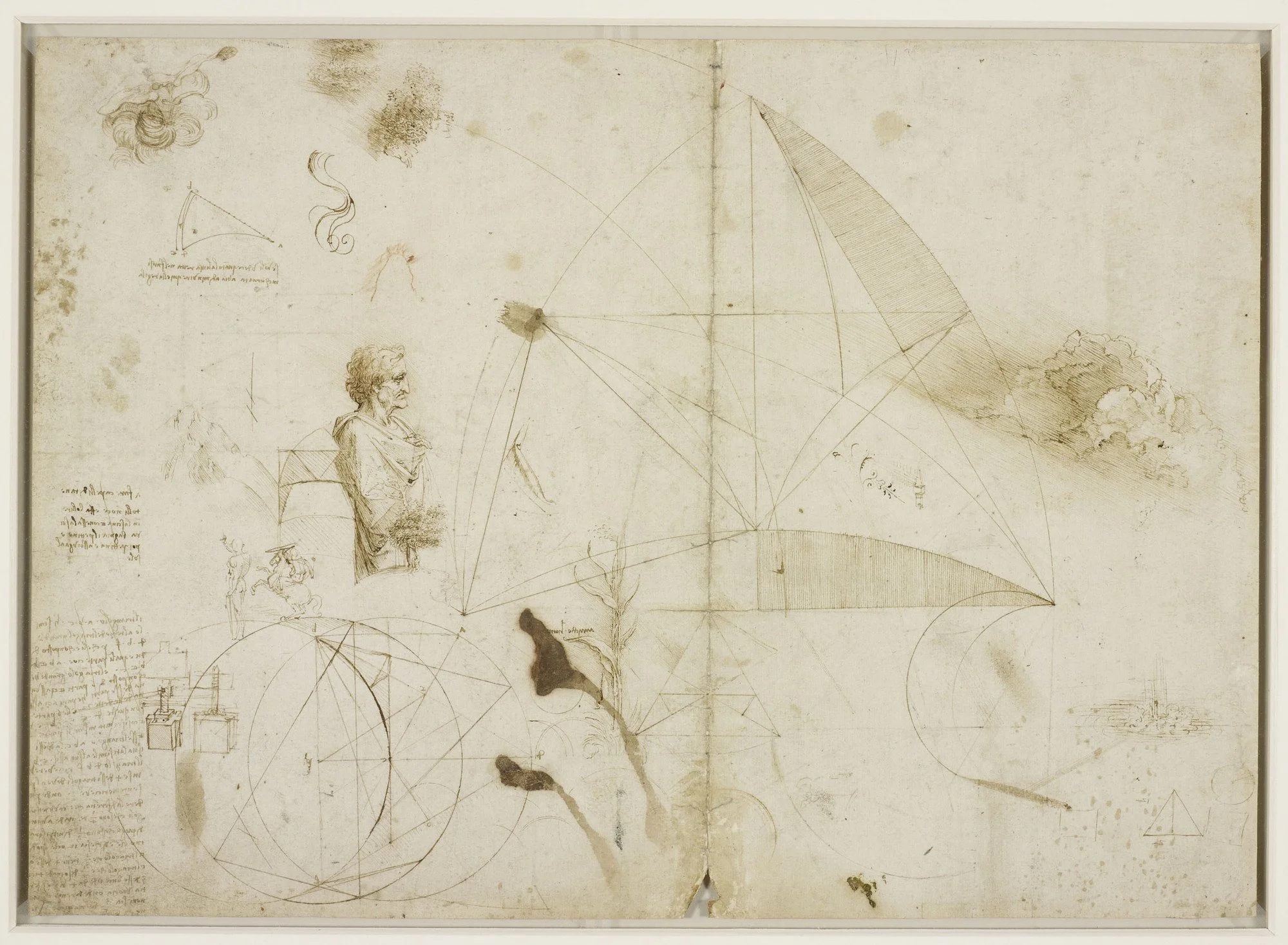Leonardo da Vinci: Experience, Experiment and Design
Martin Kemp
V&A Publications (2006)
This catalog for a 2006 exhibit explores da Vinci's thinking processes through his notebooks, where he concretized ideas on paper. It’s among the best books I’ve found on his integrative methodology.
"Drawing served as the primary tool of analysis and as the most potent way to demonstrate the essential unity of all things designed by nature," writes author Martin Kemp. (p. 192)
Leonardo da Vinci’s "Theme Sheet" is a single page from his notebooks, circa 1490, housed in the Royal Collection Trust at Windsor Castle in London. (Credit: Wikipedia Commons)
In the introduction, "Unity in Diversity," Kemp analyzes the "Theme Sheet"—a page featuring sketches from geometrical designs to shaded clouds and a lily. "Leonardo was habitual in seeing relationships between things that most of us would consider distinct subjects,” Kemp observes. (p. 16).
Central to da Vinci’s methodology was the ancient microcosm-macrocosm analogy, envisioning man as a miniature version of the world. This framework engendered his belief that all creation operates according to universal causes. (p. 11).
Examining da Vinci’s exhaustive, seemingly fruitless water studies, Kemp notes he nonetheless insightfully applied them to his heart studies—relating water flow to blood circulation. (p. 171) He also highlights da Vinci's integration of branching systems in trees, rivers and human vasculature. (p. 53)
“Leonardo was habitual in seeing relationships between things that most of us would consider distinct subjects.”
Kemp concludes that da Vinci's primary unifying theme was "the mathematical operation of all the powers of nature"—proportional laws underlying everything from human beauty to water flow. (p 192)


